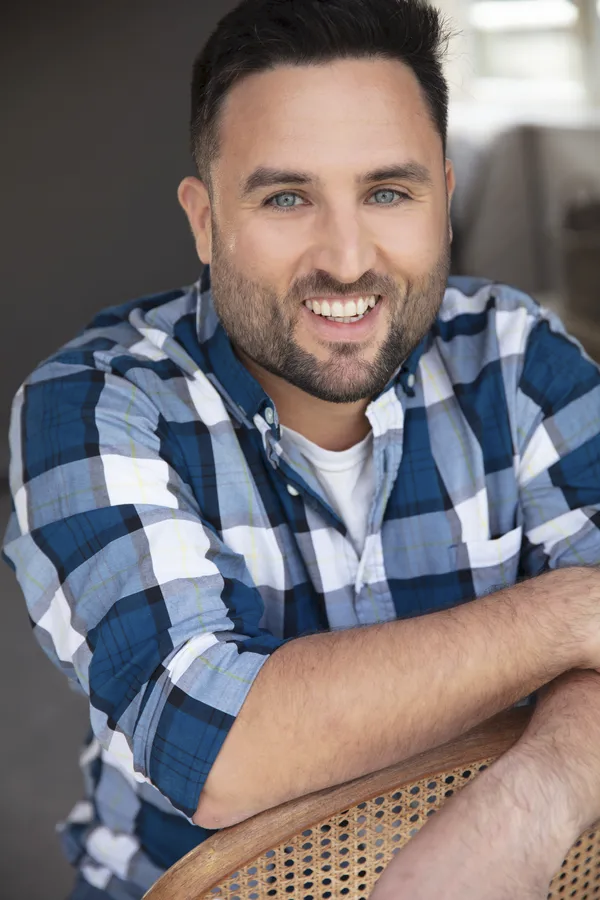MNR alum Adam Schellhammer expands his career to new fields and countries
July 5, 2022

By Lindsay Kuczera
When Adam Schellhammer first started the Virginia Tech Master of Natural Resources (Online) program in 2014, he never imagined he’d end up changing his job entirely. While Adam was working as a resource manager for Friends of Princeton Open Space—a nonprofit that establishes parkland and hiking trails around Princeton, NJ and advocates for policy decisions that protect the environment—Adam realized that his concentration in restoration work offered growth opportunities, especially as climate resiliency programs became more widespread. He thought the best way to gain more expertise and grow in the field was to earn a graduate degree.
Adam chose the MNR because of its large scale and holistic, customizable approach to training. “I liked that there were good core classes, but also that, depending on my curiosities and career aspirations, it could be tailored to meet those needs,” he said.
From field to facilitator
The MNR (Online) program allows students to choose from a variety of sustainability topics—from water and marine management to environmental policy and urban systems. Adam began the program imagining that he would deepen his skills in being a practitioner in restoration, but thanks to the diversity of classes, he quickly realized that he really enjoyed the conflict resolution and policy aspects of natural resource management.
The Leadership Communication for Sustainability Professionals course, created by Emily Talley, sparked Adam’s unexpected decision to refocus his specialty to include strategic planning and community engagement. In fact, it prepared him to collaborate with numerous stakeholders in the new positions that followed this career shift.
After leaving Friends of Princeton Open Space, Adam joined the Monroe County Conservation District, where he worked with developers, policymakers, and other county stakeholders to ensure economic development was done while protecting existing resources. The communications course helped him gain the skills and confidence to manage conflicting needs and expectations in this line of work.
“Adam is an amazing ambassador of our Master of Natural Resources, both as a member of our alumni advisory council and in his leadership roles within the field,” said Emily. “Adam is adept at working creatively and collaboratively with partners across traditional boundaries to drive systems change, and we are so grateful for his unwavering commitment to environmental sustainability and to Virginia Tech.”
Gaining a global perspective
During his Global Study trip (a required component in the MNR program) in Yunnan, China, Adam’s group focused on water resources and the cultural and industrial factors that affect water quality in the region. They met with community leaders to learn how deforestation in the 1950s had an impact on local water quality, and how traditional burial practices led to increased impervious surfaces and runoff. Adam says that the most important thing you can do when engaging communities is to simply listen.
This experience, along with his communications skills, eventually brought Adam to New Zealand. There he took a position with the Healthy Waters department of Auckland Council, which is tasked with stormwater management and delivering community-based water quality improvement and habitat restoration initiatives. Adam credits his graduate education with giving him the framework to identify and understand cultural drivers and community needs so he could successfully build trust with these communities.
Adam's team, Wai Ora Partnerships, worked with Iwi (a Mãori tribe) partners, local governmental entities, community groups, and regional collaboratives to develop and implement those community-based projects. The types of projects they worked on ranged far and wide, including natural infrastructure, industrial pollution reduction, farmland management and restoration, stream restoration, urban planting, regenerative agriculture, seaweed restoration, and much more. Their ultimate goal was capacity and partnership building to deliver high-quality water and climate resiliency projects in the Auckland region.
Resource protection and sustainable development are not mutually exclusive
An important consideration when engaging stakeholders in a proposed project is to affirm that the benefits do not need to be mutually exclusive. Adam believes that making that connection with communities and stakeholders helps in conflict resolution by showing that new development can coincide with resource protection.
This often comes up in urban project settings. When working with a commercial building owner, Adam assured them that they could meet their development goals of having an aesthetically pleasing, productive workspace while simultaneously increasing local biodiversity and improving downstream water quality. “It’s simply about walking down that path and making sure it meets their goals, as well as having those wider positive impacts,” Adam noted.

In his new role as Executive Director for the Valley Conservation Council in Staunton, Virginia, Adam engages numerous stakeholders on potential projects and helps identify opportunities for easements and climate resiliency acquisitions. For example, by using AI technology to identify historic wetlands, Adam’s team can overlay flood data and evaluate opportunities for targeted acquisition and restoration in order to reduce downstream flooding. “We are the headwater protectors of the Washington, D.C., and Richmond drinking water supplies,” he said.
Keeping in touch
Adam realizes that one of the biggest benefits from the MNR program was the guidance he continues to enjoy from instructors. He’s found that, on occasion, reaching out to a previous instructor engaged in his line of work has helped save him and his team precious time in scenario planning and execution. The communities are also better for it. Instead of wasting money on a project that wouldn’t pan out, a quick conversation resulted in something more productive for the community.


